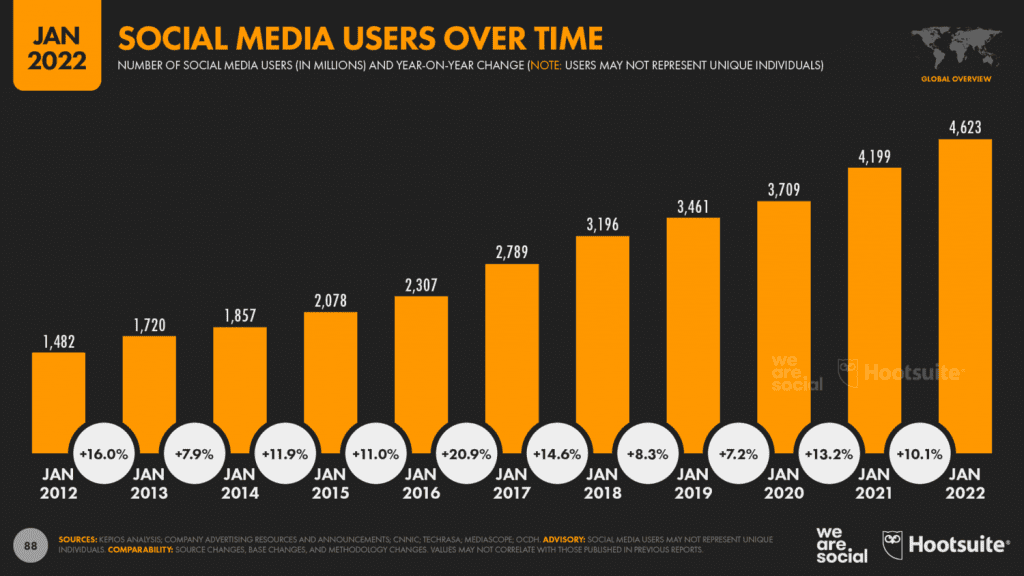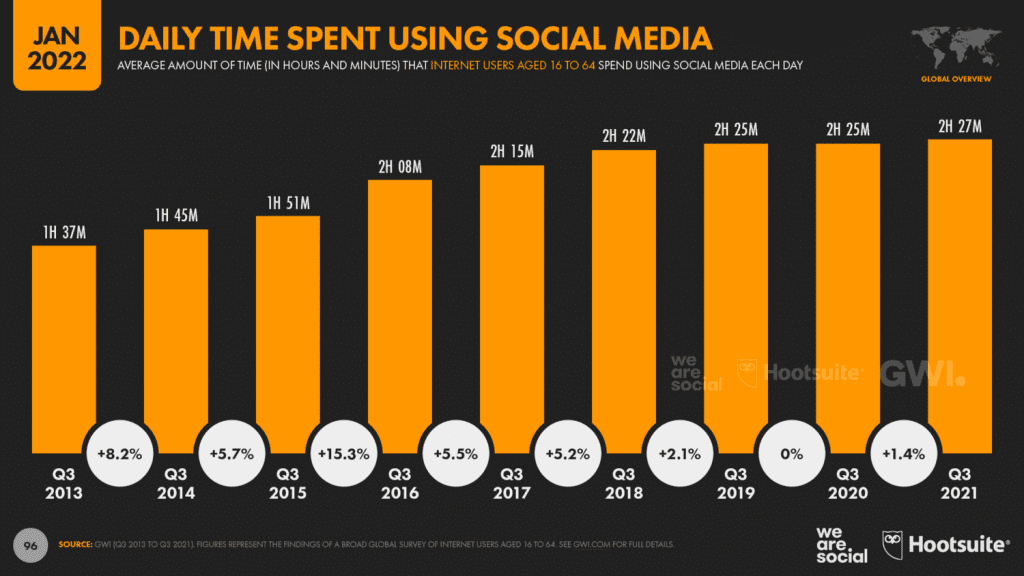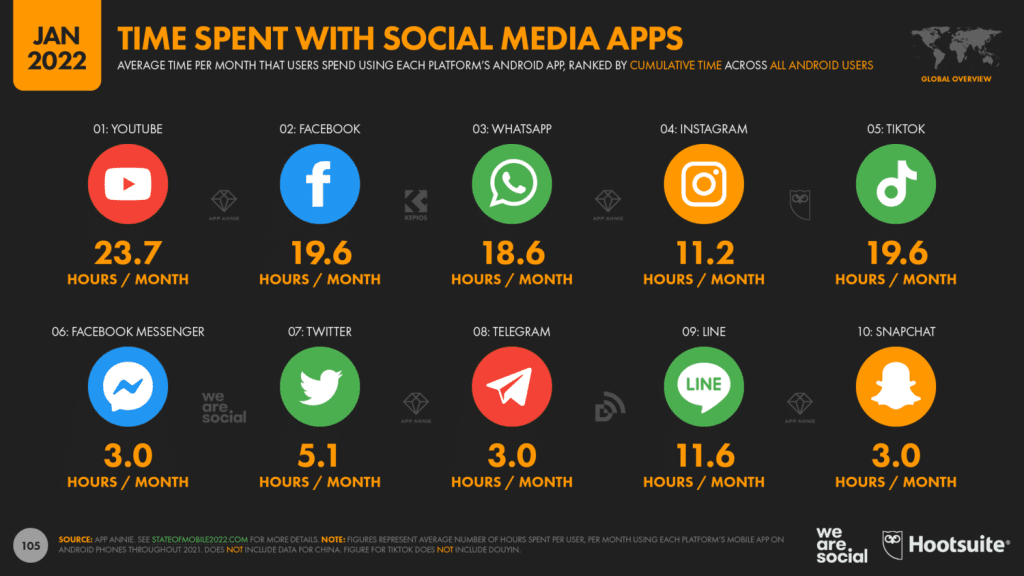Social media relates to networking sites and apps designed for people to swiftly and effectively post information in real-time. While many users use mobile apps to reach social media, this communication channel originated on computers. The concept of Social Media is so broad that you may use it to describe nearly any site on the internet nowadays.
What is Social Media?
Social media is a collective term for websites and applications focusing on communication, community-based input, interaction, content-sharing and collaboration. People use social media to stay in touch and interact with friends, family and various communities. Businesses use social applications to market and promote their products and track customer concerns.
Business-to-consumer websites include social components, such as comment fields for users. Various tools help businesses track, measure and analyze the attention the company gets from social media, including brand perception and customer insight.
Social media has enormous traction globally. Mobile applications make these platforms easily accessible. Some popular examples of general social media platforms include Facebook, Twitter, Youtube and more.

Outstanding Features
The benefits of social media
- User visibility: Social platforms let people easily communicate and exchange ideas or content.
- Business and product marketing: These platforms enable businesses to publicize their products and services to a broad audience quickly. Businesses can also use social media to maintain a following and test new markets. In some cases, the content created on social media is the product.
- Audience building: Social media helps entrepreneurs and artists build an audience for their work. In some cases, social media has eliminated the need for a distributor, because anyone can upload their content and transact business online. For example, an amateur musician can post a song on Facebook, and get instant visibility among their network of friends, who share it on their networks.
The advantages of social media
- Mental health issues: Overuse of social apps can result in burnout, social media addiction and other issues.
- Polarization: Individuals can end up in filter bubbles. They create the illusion of open discourse when the user is actually sequestered in an algorithmically generated online community.
- Disinformation: Polarized environments foster the spread of disinformation where the perpetrator’s intent is to deceive others with false information.
- Security and retention: Traditional data security and retention policies may not work with the features available in collaboration tools. This can raise security risks and compliance issues that companies must deal with.
- Productivity concerns: Social interaction, whether online or in person, is distracting and can affect employees’s productivity.
Overall Market
Based on data from a datareportal.com social media report in 2020, we can take a look at the following figures:
User Growth
Meanwhile, social media users have seen even faster growth than internet users over the past decade.
Today’s total of 4.62 billion social media users is 3.1 times higher than the 1.48 billion figure we published in 2012, and means that social media users have grown at a CAGR of 12 percent over the past decade.

Social media user growth has continued at a double-digit rate of 10.1 percent over the past 12 months too, but I confess I’m surprised that the growth rate between 2021 and 2022 has remained above pre-pandemic levels.
For context, the latest data indicate that 424 million users started their social media journey over the past year, equating to an average of more than 1 million new users per day, or roughly 13½ new users every single second.

At an average of 2 hours and 27 minutes per day, social media accounts for the largest single share of our connected media time, at 35 percent of the total. The time we spend using social media has grown again over the past year too, up by 2 minutes per day (+1.4 percent).

Social Media Favourite
When it comes to the world’s “favourite” social media platforms, GWI’s latest data reveals that Instagram has now overtaken Facebook to claim second place in the worldwide rankings.
It’s still a close call though: 14.8 percent of global internet users identify Instagram as their favourite platform, compared with 14.5 percent for Facebook. However, yet another Meta platform – WhatsApp – tops the global rankings, with 15.7 percent of working-age internet users choosing the messenger app as their favourite social platform.
Interestingly, WeChat gains enough votes to rank fourth at a global level, despite a whopping 99 percent of the platform’s votes coming from users within Mainland China. China is home to roughly 20 percent of the world’s total internet users though, so it’s perhaps unsurprising that the country’s social media users have such a big impact on these global rankings.
However, you may be more surprised to see TikTok gain just 4.3 percent of the total vote. That doesn’t quite match the excitement TikTok generates in the media, but it’s worth noting that the number of people choosing TikTok as their favourite social platform has jumped by 71 percent in the past 90 days, and TikTok’s overall share of the vote has increased by 180 basis points in just 3 months.

Revenue of social media companies
In 2021, Meta Platforms, formerly Facebook Inc., had a total annual revenue of over 117 billion U.S. dollars, up from 85.96B in 2020. Additionally, for 2021, Twitter reported a revenue of 5.07 billion U.S. dollars, an increase of over 1.3 billion U.S. dollars from the previous year.

Some Applications of Social Media
Social media may take the form of a variety of tech-enabled activities. These activities include photo sharing, blogging, social gaming, social networks, video sharing, business networks, virtual worlds, reviews, and much more. Even governments and politicians utilize social media to engage with constituents and voters. Here are a few popular apps right now:

Monthly active users: 2.91 billion
Facebook is not only the world’s largest social network, it’s also the most developed channel for organic and paid social marketing, 18.2% of adults in the US made a purchase through Facebook last year. People use Facebook to keep up with friends, family, and news using various forms of shared content (everything from written updates to live video and ephemeral Facebook Stories).
Brands who maintain a presence on the platform might use organic content for brand awareness, and/or relationship nurturing through social customer service. Marketers can also tap Facebook’s user data to reach new customers with relevant advertising. Most recently, Facebook is prioritizing e-commerce shopping via Facebook Shops.

Youtube
Monthly active users: 2.56 billion
YouTube isn’t always thought of as one of the world’s social media apps. You could just as easily call it a video platform, or the world’s second-largest search engine.
For established brands with big-gun marketing agencies, YouTube ads running before or in the middle of original videos aren’t a huge stretch from what you’d run on TV. Meanwhile, for brands building their own youTube channel by posting original videos, it’s important to play nice with the YouTube algorithm, which takes some combination of skill, strategy, budget, and luck. But there is potential pay-off there, too: 70% of viewers have bought from a brand after seeing it on YouTube.
In short, because YouTube is video (usually long-form video) the barrier to entry is a little bit higher for DIY marketers, who will benefit from time, money, and talent (or preferably all three).

Tiktok
Monthly active users: 1 billion
TikTok is inarguably one of the buzziest social media apps on this list. It’s notable for its explosive growth, as it has only been around since 2017. Yet it was the #1 top-downloaded app in 2021. TikTok is a short-video sharing platform with a uniquely addictive algorithm. It holds a lot of sway with teenagers and Gen Z. For instance, it outpaced Instagram as American teenagers’ second-favourite social platform in fall 2020, and now it’s closing in on Snapchat for #1.

Monthly active users: 436 million
Given its fairly small user base, Twitter has impressive name recognition 90% of Americans have heard of Twitter, though only 21% use it. That, combined with an active population of politicians, journalists, celebrities, and comedians, keeps the platform punching above its weight, especially in North America (and Japan, where it’s the #1 platform.)
How can brands use Twitter? Organic Twitter marketing will depend on your brand voice, but there’s plenty of room for personality (American fast food brands regularly bicker with each other). Customer service is also an important opportunity. And of course, Twitter offers an ad platform for brands to target their audiences.

Verdict
Social media is everywhere. Individuals and businesses of all sizes and types use it. This trend has entered the blockchain platform under the name socialfi. Let’s follow Coincu’s next articles about it.
If you have any questions, comments, suggestions, or ideas about the project, please email ventures@coincu.com.
DISCLAIMER: The Information on this website is provided as general market commentary, and does not constitute investment advice. We encourage you to do your own research before investing.
Ares
Coincu Ventures

















